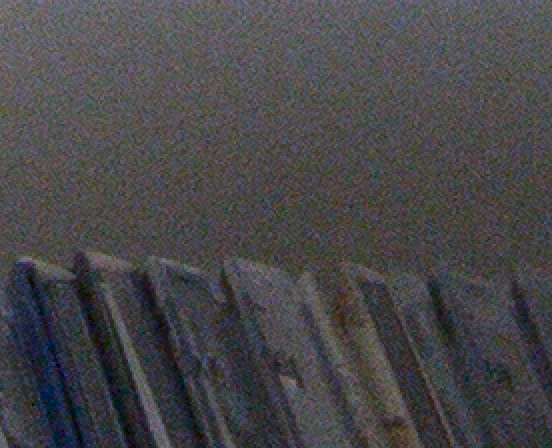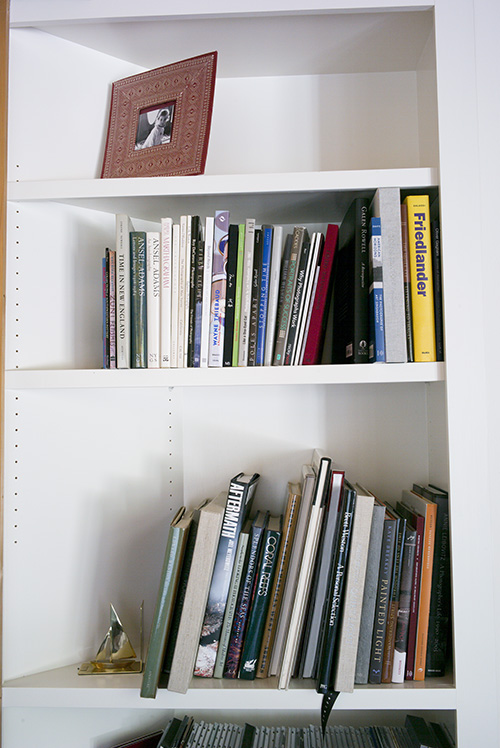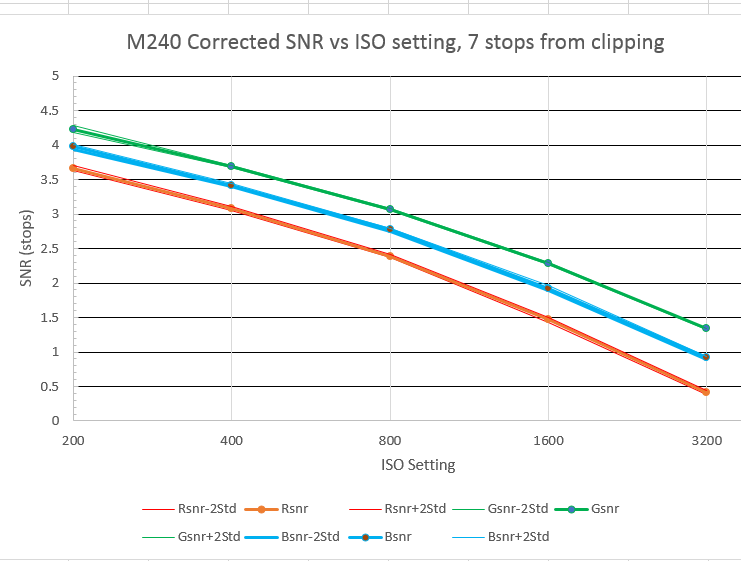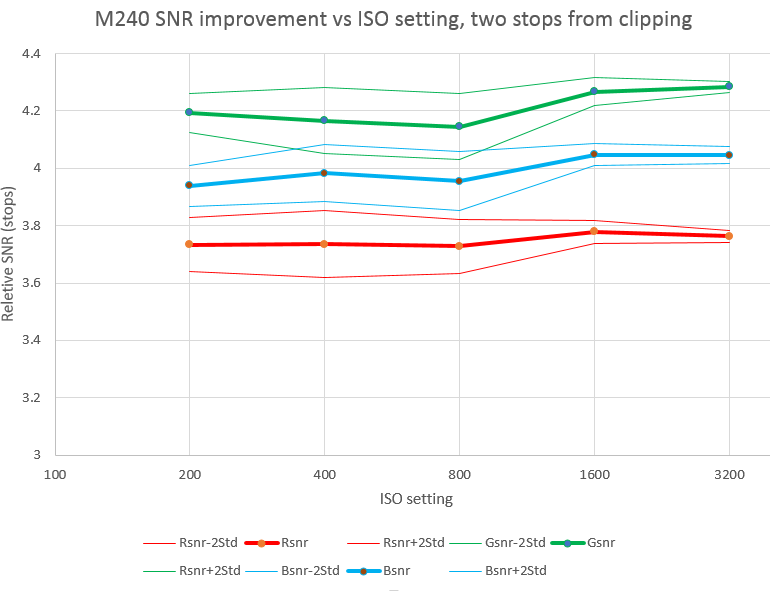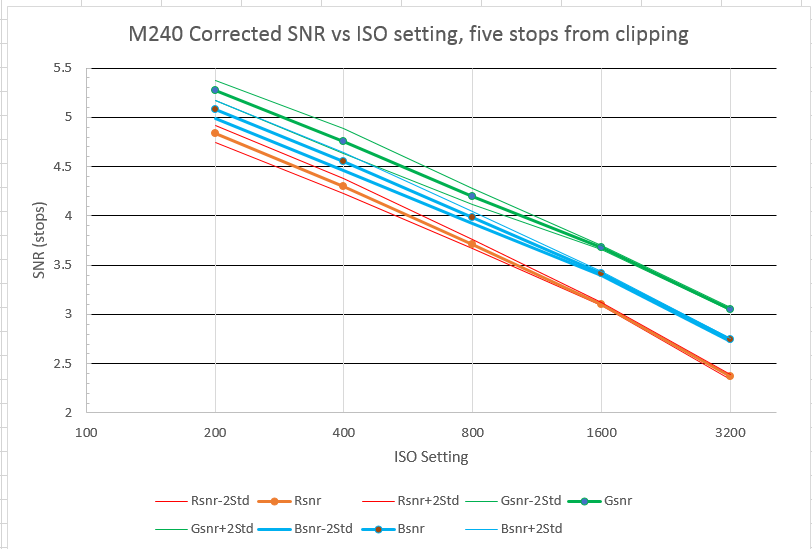Now let’s take a look at a shadow region of the bookcase images. ISO 3200: ISO 1600 with a one-stop push: ISO 800 with a two-stop push: ISO 400 with a three-stop push: ISO 200 with a four-stop push: My conclusions are pretty much the same as with the middle and high tone images, but… [Read More]
Archives for September 2013
Leica M240 post-push images
We’ve seen the results of calculations that indicate that you can get lower noise with your M240 by underexposing at low ISOs and pushing in post than you can by just cranking up the in-camera ISO. Do real-world photographs bear that out? Let’s see. The subject is familiar to readers of this blog: my bookcase…. [Read More]
Is the Leica M240 ISOless, part 3
Earlier today I posted SNR vs ISO curves for exposures yielding values two stops down from clipping. Yesterday, I posted SNR vs ISO curves for exposures yielding values five stops down from clipping. I decided to explore what happens seven stops down from clipping in the blue channel, a little brighter than that in the… [Read More]
Is the Leica M240 ISOless, part 2
Yesterday we saw that the Leica M240 is “ISO-less” five stops from full scale — moderate shadows in a normal outdoor scene. Today, I repeated yesterday’s testing, but two stops from full scale — the brighter parts of a normal outdoor scene, but short of the highlights. Actually, the blue channel is two stops from… [Read More]
Is the Leica M240 ISOless?
With the noise floor and self-heating testing out of the way, we’re ready to tackle the question, “Is the M240 ISOless?” If that question makes no sense to you, hang in there. Explanations follow. Let’s talk a bit about how your camera works. First, there are the photosites, or sensels, which are little features (usually… [Read More]
- « Previous Page
- 1
- …
- 4
- 5
- 6
- 7
- Next Page »
